Mineral Deficiency Symptoms in Roses
This thread is dedicated to identify the symptoms of various minerals in our roses. It will be greatly appreciated if members post photos of the affected roses.
I know a lot of information on mineral deficiency can be found in various threads in this forum and very useful remedies have also been suggested by knowledgeable members. specially Straw. But it's hard to extract that information when needed. So lets compile them at one place so that new members can just refer to one thread and find remedy to their problems. Here we go....
Comments (80)
- Khalid Waleed (zone 9b Isb) thanked strawchicago z5
strawchicago z5
7 years agolast modified: 7 years agoInteresting site on what weeds on in your soil can indicate what nutrients-level. My soil is infested with dandelions, yes, my soil test showed barely adequate in calcium. But the place where it's rock-hard, potassium is tied up, but once I make it loamy .. plenty is released.
http://homestead.org/DianaBarker/LooktotheWeed/SoilIndicators2.htm
Dallisgrass indicates low calcium, very high magnesium, and high potassium levels. Dandelions indicate very low levels of calcium, and very high levels of chlorine and potassium. Hop Clover and Oxalis indicate very low levels of calcium and high levels of magnesium. Prostrate Spurge indicates low calcium levels and very high levels of chlorine, magnesium, potassium, and sodium. Purslane and Mustard indicate an abundance of phosphorus. Red Clover indicates an excess of potassium. Redroot Pigweed indicates an abundance of nitrogen. White Clover indicates very high levels in chlorine, magnesium, and sodium. Wild Garlic indicates very low calcium and bacterial count, and very high levels of chlorine, magnesium, potassium, and sodium. Yarrow (Achillea millefolium) indicates low potassium.
http://homestead.org/DianaBarker/LooktotheWeed/SoilIndicators2.htm
The above link also have other good info. " Calcium doesn’t move freely within the plant, so the first symptoms of low calcium will appear in new growth. Chlorosis begins first at the leaf edges and then moves inward. Terminal buds become distorted. Young leaves will first turn yellow, then brown. Low calcium levels cause tomatoes to develop blossom-end rot and lettuce tip-burn. Low calcium is found in acidic soils, sandy soils, soils that contain excessive levels of magnesium or potassium. "
From Straw: yes, my soil is exceedingly high in magnesium, which make calcium less available.
" Low-iron chlorosis begins at the top of the plants and works it’s way down. Shoots may die back and the fruit become discolored. Alkaline soils or soils with excess aluminum or phosphorus can cause low iron levels. Iron is important in photosynthesis and is a catalyst in plant respiration and iron utilization. "
" Magnesium moves freely within plants, so a magnesium deficiency will start in the lower leaves, discoloring the veins. First they turn yellow, then orange, and finally brown. Leaves will feel brittle, thin, and sometimes cup upward. Magnesium deficiency is found in wet, acidic, or sandy soils, also in soils with high concentrations of calcium, fertilizers, and potash. "
" Manganese deficiency may be hard to diagnose because it’s similar to iron deficiency. Chlorosis is most severe at the top of the plant, with yellowing of the leaves first appearing near the leaf margins and developing into a V-shaped pattern. Leaves will then develop tan or gray spots. These spots are the major difference between manganese and iron deficiency. Manganese deficiency most often occurs in alkaline soils high in humus or soils with a pH of 6 or more. "
From Straw: yes, my soil is deficient in manganese, it's rampant in the maple trees around here, and in my acid-plants.
In potassium deficiency, the older leaves become mottled or spotted, edges become dry and scorched. Dead spots begin to appear, the stems are weak, root systems poor, and fruit ripens unevenly. Potassium deficiency causes a reduction in disease resistance and makes the plant less storable. It is more common in sandy or acidic soils, also where there are excess calcium or magnesium levels in the soil.
Potassium is important for the formation of flowers, fruit, leaves and growing tip. Potassium helps with photosynthesis at low light level and in internal water regulation. Potassium improves flavor, fruit, vegetable and flower color. It also provides protection from insect damage, disease, and frost.
From Straw: yes, I see potassium deficiency in my fast-draining pots (with loamy & acidic potting soil). After 3 watering with sour-alfalfa tea, Munstead Wood's leaves got mottled and spotted, plus floppy stems.
Sulfur deficiency closely resembles nitrogen deficiency. The plants turn pale green, the effects show up first in young growth. Leaves turn yellow but they don't dry out, and stems are weak.
A zinc deficiency can be similar to a nitrogen deficiency with rolled leaf margins. Chlorosis shows up first in young leaves, which are also reduced in size. Leaves are closely spaced, forming rosettes, and may be deformed.
http://homestead.org/DianaBarker/LooktotheWeed/SoilIndicators2.htm
Related Discussions
Rose nutrient deficiency? (7 pics)
Q
Comments (3)Eric, my guess is that it is iron chlorosis. Here's a link to a fact sheet from Ohio State/Univ of Ky. You might need to get a soil test done. Gean Here is a link that might be useful: see article on iron chlorosis in this newsletter...See MoreRose nutrient deficiency? (7 pics)
Q
Comments (8)First of all have a soil analysis done. I have no idea what the pictures of your leaves show. Could be caused by many things. My soil test showed 7#/acre of iron. I posted the results of my analysis here and one response was that my iron was low. Although the foliage on my roses showed no chlorosis I tried some, I forget the name of it, but chelated iron. The rose in question responded. So this Spring I have been adding Iron in the form of Iron oxide. Too early to tell if it will make any difference. Hopefully someone will recognize your leaves as a symptom of something. It is really tough since there are so many factors involved....See MoreDiagnosis for rose leaf symptoms?
Q
Comments (3)The first rose, without doubt, is showing feeding damage. My guess is that if you look at the undersides of the leaves you'll find small arrow-shaped very pale green insects that quickly shuttle sideways away from you towards the leaf side you can't see. If I'm correct then your rose is suffering feeding damage from immature leaf hoppers. If I'm not correct about the exact insect I nonetheless am quite sure your rose is being eaten by an insect that sucks the cell contents out of the interior cells of the leaf (the cells of the parenchyma layers). As to Winchester Cathedral, those leaves are displaying nutrient deficiency symptoms (not insect damage or disease symptoms), but there are several possible causes for that, especially with a rose growing in a pot. I do not have enough rose growing experience to offer a competent opinion as to why those nutrient deficiency symptoms exist, so on that I will defer to a rose grower with more expertise than I have....See MoreMineral deficiency?
Q
Comments (3)Yes, pale with dark veins especially on the new growth indicates iron deficiency. The basic cause is high pH (alkalinity) or in some cases waterlogging. These conditions make the iron in the soil unavailable to the plant. The best course of action is to measure the pH and add the recommended amount of sulfur to correct it. However, it takes a long time for this to work. Meanwhile you can apply an iron product or switch your fertilizer to Miracid, which contains available iron....See Moreazdoctor
7 years agoIt looks like classic Fe deficiency and some powdery milder on some older leaves. Two ways to fix iron deficiency - lower pH by applying sulfur or fertilize with chelated iron (DTPA or EDDHA).
azdoctor
7 years agoChelates are not all created equal. Behavior of chelated nutrients depends both on the properties of the nutrient and the properties of the chelate. Notice the difference in stability of Zn vs Fe chelates. A chelate must be stable to be effective in soil. But if the chelate-nutrient bond is too strong, this can actually cause deficiencies. The Fe-EDTA bond is weak at high soil pH levels, but the Mn-EDTA bond is very strong (sorry, I couldn't find a nice illustration for this), so using FeEDTA in high pH soil can cause Mn deficiency. FeEDTA is not effective in high pH soils. Use Fe-EDDHA; it will take care of Fe deficiency and not cause Mn deficiency.
Organic chelates are not very effective in soil because they are not very stable and break apart rapidly. If organic matter is continually added, decomposing organic matter will continue to produce weak chelates that can help, but probably won't get rid of your Fe deficiency.

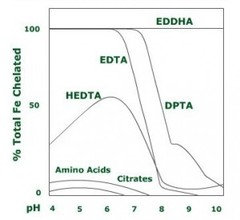
strawchicago z5
7 years agolast modified: 7 years agoThank you, azdoctor, for the above info. Potassium sulfate is the same as sulfate of potash. In my 6 years of growing 80 own-root roses in pots .. the only time I got mildew was when the pH of soil drops way below 6, thanks to acidic rain, plus salty fertilizer.
In my garden, using a combo of sulfate of potash and blackstrap molasses solved the iron deficiency faster than blood meal (has iron). Blackstrap molasses has 20% iron, 15% calcium, and 20% potassium. Sulfate of potash has 21% sulfur, with NPK 0-0-50. That combo works really well in hot & dry weather for dark-green leaves, but in rainy weather that attracts rose-slugs.
https://www.ams.usda.gov/sites/default/files/media/PSC%20technical%20advisory%20panel%20report.pdf
The primary function of potassium sulfate is as a readily available source of potassium (K), a primary nutrient taken up by plants in lager amounts than any other nutrient except N. The most important function of K is the activation of more than 80 plant enzymes (Tisdale et al 1999). It is also integral to a number of other plant processes including water relations and maintenance of plant turgor, ATP production, translocation of carbohydrates, and protein synthesis. As a result, K deficiencies cause numerous problems, from decreasing rates of photosynthesis (Smid and Peaslee 1976) to the weakening of straw in grain crops (Schulte 1975). K stress can also increase the incidence of crop damage due to bacterial and fungal diseases, insect and mite infestation, and nematode and virus infection.
https://www.ams.usda.gov/sites/default/files/media/PSC%20technical%20advisory%20panel%20report.pdf
strawchicago z5
7 years agolast modified: 7 years agoI got a free Gruss an Teplitz from Burlington nursery, it has RMV (yellowish veins, rose-mosaic-virus) when I put too much gypsum in the planting hole, which drove down potassium. But after years of putting red-lava-rock (high potassium and boron), plus sulfate of potash, the RMV-pattern is gone. Below is from eHOW, Boron deficiency can also induce RMV besides potassium deficiency.
"Potassium affects overall vigor of rose plants. According to a study about the reproductive growth of the cabbage rose (Rosa centifolia) published in 1999 by Pakistan's University of Agriculture, amendment of the soil with potassium alone can increase foliage, flowering and spread of the cabbage rose. A combined amendment of nitrogen and potassium resulted in the best plant height and flower size. A potassium shortage can make roses more susceptible to bacterial infections that wilt leaves, blacken canes and create root tumors. It may also lead to problems such as leaf mosaic virus -- a yellowing pattern on foliage." eHow on potassium deficiency.
*** From Straw: A virus is like a cold/flu, you don't have cold/flu everyday of the year, you have cold/flu for a week when the immune system is down. Potassium is vital for immune system in plants, short-on-potassium, and plants come down with RMV (rose-mosaic-virus). Sufficient potassium, and RMV go away.
Khalid Waleed (zone 9b Isb) thanked strawchicago z5Khalid Waleed (zone 9b Isb)
Original Author7 years agoStraw: This thread is full of information on mineral deficiency symptoms and there is a lot one can learn. Thanks for the continuous input.
I thought this is a subject that we will keep discussing for quite some time. I have therefore decided to number all the photos so that we can discuss them with a reference and the same can be quoted later while referring to a particular minerals deficiency / disease.
Here are few pics taken in last few days. I am not sure all this due to some mineral deficiency or it is due to some pest attack. Lets see the photos and we can refer to them with the number given on each photo.
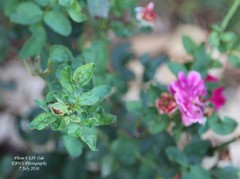

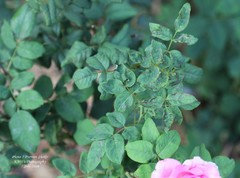


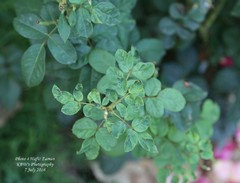 All above photos show similar symptoms. Kind of twisted leaves with curls. Could it be a mineral deficiency or some pest attack?
All above photos show similar symptoms. Kind of twisted leaves with curls. Could it be a mineral deficiency or some pest attack? This one show the same twisting of leaves plus perhaps iron deficiency. Views?
This one show the same twisting of leaves plus perhaps iron deficiency. Views?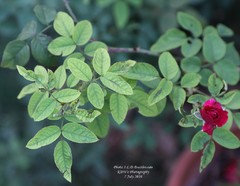
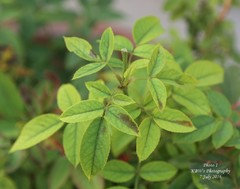 This could be nitrogen deficiency or perhaps iron deficiency too in addition to nitrogen.
This could be nitrogen deficiency or perhaps iron deficiency too in addition to nitrogen.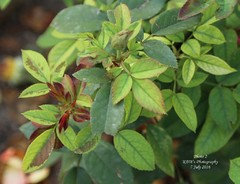
Your views, Straw?
Best regards
strawchicago z5
7 years agolast modified: 7 years agoKhalid: I re-posted some info. from last year. The crinkled leaves look like copper deficiency, and the last 3 pics. of pale leaves is iron-deficiency. Both copper and iron deficiency result from high pH soil.
Zinc is the strongest anti-fungal agent (see anti-fungal nutrients for roses thread). Below link from U. of Colorado best describes zinc deficiency:
"Plants tend to be stunted due to a shortening of the internodes. Leaves show a general yellowing of the upper foliage with a browning or bronzing of the older or lower leaves. The leaves of zinc-deficient typically have a crinkled appearance. A general downward curl of the leaves also will occur and flowering will be poor."
That's in contrast to iron deficiency: "Iron-deficient fields, when viewed from a distance, exhibit irregularly-shaped yellow areas. Because iron is not translocate in the plant, deficiency symptoms appear on the new growth first. Iron deficiency on individual plants is characterized by yellow leaves with dark green veins."
Here is a link that might be useful: Zinc deficiency versus iron deficiency
eHow describes copper deficiency as: "Leaves become curled or twisted, especially at the leaf tips. Dark spots indicating tissue death may appear in various places."
The first link I posted in this thread is worth looking into: http://www.atlantishydroponics.com/info/nutrient-deficiency-symptoms-in-plants
The above link shows what's in excess will cause deficiency in another element. My soil is tested exceedingly high in magnesium (rock hard & sticky alkaline clay) ... yet the soil test recommended adding gypsum (calcium sulfate). The reason? Excess magnesium cause a deficiency in calcium. The above link also shows excess phosphorus causes many deficiencies: iron, zinc, copper, and manganese.
Excessive calcium will induce a potassium and boron deficiencies. Excessive calcium, nitrogen, and salt will induce a potassium deficiency. If the growth of plant is thin and spindly, it's a nitrogen deficiency. But if the plant doesn't bloom, it's a potassium and phosphorus deficiency. Too much nitrogen will induce potassium & phosphorus deficiency, and zero blooming.
http://extension.arizona.edu/sites/extension.arizona.edu/files/pubs/az1106.pdf
The above link stated Calcium deficiency as "New leaves (top of plant) are distorted or irregularly shaped. Causes blossom-end rot."
Also nitrogen deficiency as "yellowing of older leaves, and the rest of the plant is light green." And magnesium deficiency as "Older leaves turn yellow at edge, leaving a green arrowhead shape in the center of the leaf".
Sulphur Deficiency Causes by Soil low in organic matter.
- Easily washed away in sandy soils. - Low temperature. - Insufficient drainage.- Light yellowing of the youngest and later on the oldest leaves & stunted plant.
This picture shows best the diffused-yellowing of zinc deficiency, I got that on Queen of Sweden when I put too much triple-super-phosphate in the planting hole.

Below is iron deficiency, note the veins still green on pale-background of young leaves:
http://hort.ifas.ufl.edu/database/nutdef/pic59.shtml

Sulfur deficiency also produces pale young leaves, but the leaves ARE NORMAL size, rather than being smaller like in zinc-deficiency. Below is sulfur deficiency in Chinese cabbage. Below link has excellent info. on foliar spraying of all nutrients, including ammonium sulfate (21% nitrogen and 24% sulfur)
http://www.aardappelpagina.nl/explorer/pagina/fertilizersupl.htm
 Khalid Waleed (zone 9b Isb) thanked strawchicago z5
Khalid Waleed (zone 9b Isb) thanked strawchicago z5strawchicago z5
7 years agolast modified: 7 years agohttp://www.gardeningknowhow.com/garden-how-to/soil-fertilizers/manganese-in-plants.htm
The above link points out the difference: "Magnesium is a part of the chlorophyll molecule. Plants that are lacking in magnesium will become pale green or yellow. A plant with a magnesium deficiency will show signs of yellowing first on the older leaves near the bottom of the plant. However, MANGANESE is less mobile in a plant than magnesium so that the symptoms of deficiency appear first on young leaves."
Magnesium deficiency is also confused with potassium deficiency. An excerpt from below link on potassium deficiency: "When severe potassium deficiency happens: The leaves, especially older leaves, may have brown spots, yellow edges, yellow veins or brown veins."
https://www.hydroponics.net/learn/deficiency_by_element.asp
Zinc Deficiency: Chlorosis may accompany reduction of leaf size and a shortening between internodes. Leaf margins are often distorted or wrinkled. (high phosphorus or high calcium will induce zinc deficiency).
Phosphorus Deficiency: Plants are stunted and older leaves often dark dull green in color. Stems and leafstalk may turn purple. Plant maturity is often delayed.
Calcium Deficiency: Young leaves are affected first and become small and distorted or chlorotic with irregular margins, spotting or necrotic areas. Bud development is inhibited and roots may be underdeveloped or die back. Fruit may be stunted or deformed.
The below link from U. of Florida shows an excellent pic. of zinc deficiency. Note the smaller & pale leaves in pear tree due to zinc-deficiency:
http://hort.ifas.ufl.edu/database/nutdef/pic18.shtml
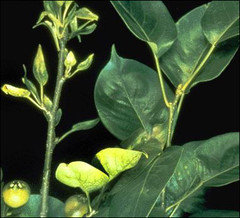
Excellent copper-deficiency pic. in rose-leaves:
http://hort.ifas.ufl.edu/database/nutdef/pic23.shtml
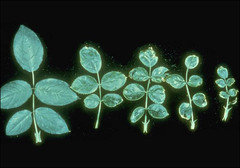
Here's how iron-deficiency in rose looks like:
http://hort.ifas.ufl.edu/database/nutdef/pic57.shtml
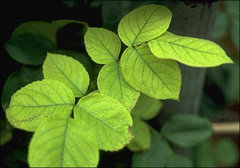
Here's a large data base of pics. from U. of Florida, worth looking into:
http://hort.ifas.ufl.edu/database/nutdef/index_element_common.shtml
Excellent link with pictures of deficiencies. Learn something new: over-liming will also cause zinc deficiency: smaller & pale leaves and shorter interval between nodes.
Since copper is a strong fungicide. Here's an excerpt from below link on copper deficiency:
" Plant shows a lack of growth; petioles bend downward; leaves appear light green and become dry at the tips; - See more at: http://www.biology.lifeeasy.org/1223/what-are-the-deficiency-symptoms-of-copper-in-plants#sthash.rk3hp95Y.dpuf
Here's a picture of copper deficiency, taken from below link:
Deformities, puckering and holes in young leaves.
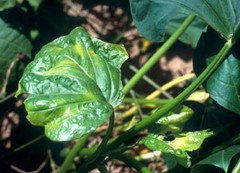
Excellent copper-deficiency pic. in rose-leaves:
http://hort.ifas.ufl.edu/database/nutdef/pic23.shtml
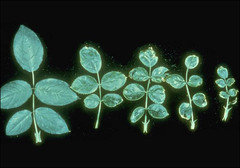 Khalid Waleed (zone 9b Isb) thanked strawchicago z5
Khalid Waleed (zone 9b Isb) thanked strawchicago z5strawchicago z5
7 years agolast modified: 7 years agoKhalid: I think the pic. of your crinkled leaves is copper deficiency, caused by high pH & high organic matter and water-logged soil.
Large excerpt from below site:
http://www.plantsdb.gr/en/general-cultivation/fertilizing/457-nutrient-deficiencies-and-toxicity
Whole plant is affected, starting from the older leaves.
- Nitrogen - Phosphorus - MolybdenumSymptoms restricted to the older leaves:
- Potassium - Magnesium - ChlorideSymptoms restricted to the newer leaves:
- Calcium - Sulphur - Iron - Zinc - Boron - Manganese - CopperNitrogen Deficiency Caused by:
- High levels of Phosphorus or Potassium & Waterlogged soil.- Yellowing of the leaves, that starts from its tip. Older leaves are affected first
- Thin young shoots & Stunted growth & Small sized leaves & - Short internodes.Too much nitrogen: caused by dry conditions & Stems are dark green. - Increased susceptibility to diseases & Decreased flower and fruit production.
Phosphorus Deficiency Caused by:
- Too high (>7.5) or too low (<5.5) soil pH and Low temperature.
- Insufficient aeration of the soil or Waterlogged soil.
- Low soil organic matter & High Zinc levels.- Older leaves turn dark green with pink to red blotches, especially on their lower side. Newer leaves are affected later on.
- Similar discoloration of older stems & Root growth slows down& less bloomsToo much will induce: Nitrogen, Zinc, Iron or Manganese deficiency.
Potassium Deficiency Caused by:
- Low cation-exchange capacity (CEC) of the soil (eg. soil high in organic matter).
- High Magnesium or Calcium levels & Dry conditions.
- Low pH and increased salinity & Compacted soil. & Low temperature.- Yellowing and necrosis of the lower leaves, starting from their tips or their margins & Decreased blooming & Thin young shoots.
Too much will causes Nitrogen or Magnesium deficiency.
Calcium Deficiency Caused by:
- Low soil pH & Low soil cation-exchange capability (CEC).
- High levels of Magnesium, Sodium or other cations.- Young leaves are distorted, with curled margins and tip or with brown spots.
- Old leaves are dark green.& Terminal bud necrosis.
- Stunted root growth & Blossom-end rot.Too much - Causes deficiency Magnesium, Potassium, zinc, iron & others.
Magnesium Deficiency Causes by:
- Low soil pH - High Manganese or Potassium levels.
- Low cation-exchange capability (CEC) of the soil. - Low temperature.Yellowing of the old leaves that starts from their margins and spreads between their veins.
Sulphur Deficiency Causes by Soil low in organic matter.
- Easily washed away in sandy soils. - Low temperature. - Insufficient drainage.- Light yellowing of the youngest and later on the oldest leaves & stunted plant.
Too much: causes pH leves to drop.
Iron Deficiency Causes by High soil pH and salinity.
- High Phosphorus, Manganese, Calcium, Molybdenum or Zinc levels.
- Soil low in organic matter & Insufficient drainage.Leaves become yellow or near white between their veins. Stunted growth.
Too much Causes: - Zinc or Manganese deficiency & Very low pH.
Zinc Deficiency Causes by High pH or High Phosphorus or Copper levels.
Soil low in organic matter.- Yellow spots or diffuse chlorosis between leaf veins.
- Small leaves with irregular shape & Necrosis and defoliation.
- Short internodes & Poor flower and seed production.Manganese Deficiency Caused by:
- High pH & Soil high in organic matter.
- High levels of Iron, Chloride or heavy metals & Waterlogged soil.- Leaves become yellow or near-white between their veins. Discoloration is more intense than Iron deficiency.
- Grey spots, especially near the base of the leaves.Too much Caused by Low pH (<5.5).
- Older leaves become chlorotic or necrotic. & Affected root growth.
Copper Deficiency Caused by:
- High pH & high in organic matter.
- Waterlogged soil & Increased Zinc, Nitrogen and Phosphorus levels.- Young shoots are distorted or wilting.
- Younger leaves become yellow between their veins. Later on their vein become yellow too. Poor or no blooming. & Stunted growth and weakened defense.Khalid Waleed (zone 9b Isb) thanked strawchicago z5strawchicago z5
7 years agoCalcium deficiency symptoms appear initially as localized tissue necrosis leading to stunted plant growth, necrotic leaf margins on young leaves or curling of the leaves, and eventual death of terminal buds and root tips. The new growth and rapidly growing tissues of the plant are affected first. The mature leaves are rarely if ever affected because calcium accumulates to high concentrations in older leaves.[3]
Here's a picture of calcium deficiency from below site: picture of calcium deficiency necrotic spots on mid and older leaves, roundish but irregular in shape and symmetrically arranged. - fibrous root growth is inhibited.
- Occurs in light-textured acid soils, with low cation exchange capacity. May be exacerbated by heavy application of potassium fertiliser (which can inhibit calcium uptake).
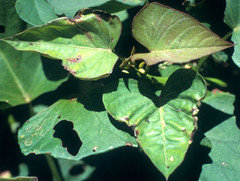
Other factors that limit the availability of calcium: " Calcium forms insoluble compounds with other elements in soil, such as phosphorous. Calcium competes with other positively charged ions, such as sodium (Na+), potassium (K+), and magnesium (Mg+2). Applying too much of these positively charged ions might decrease calcium uptake by plants.
Khalid Waleed (zone 9b Isb) thanked strawchicago z5Khalid Waleed (zone 9b Isb)
Original Author7 years agoStraw: Thanks for an excellent input. It took me some time to see most of the links and comprehend the whole thing and I still feel I need to read it a few more times but now I am quite aware of the whole things. Thanks a ton.
So, the twisted leaves look like a Cu deficiency. The causes mentioned are high pH, too much organic matter and water logging. It could be high pH but not water logging. And what does it mean by too much organic matter? What is the yardstick to understand that organic matter is now "too much"?
In iron deficiency symptom, I think high pH could be the reason. All my pots have excellent drainage and are not "low" in organic matter per se.
So how to address copper and iron deficiency. If I lower the pH level (watering with one 2 table spoon apple cider vinegar in 10 liter tap water), would it serve as a treatment for both Cu and Fe? Or maybe let the monsoon season do its' bit when too much rain would automatically lower the pH level? What do you say?
best regards
strawchicago z5
7 years agolast modified: 7 years agoKhalid: I would NOT lower pH via vinegar: I did that before in hot summer and leaves became thin and wilted. Vinegar has acetic acid, very harmful to roots. Best to let nature lower the pH, either through decayed leaves, or through acidic rain.
My soil booklet stated that no more than 10% of organic matter, the rest of soil should be minerals & clay & sand.
In America we have copper pennies before 1982, and zinc pennies after 1982. Copper pennies weigh 3.11 grams, whereas the zinc pennies weigh only 2.5 grams.
When I planted Yves seedling, I buried at least a dozen of zinc and copper pennies .. Two years later I dug Yves up, and found only one penny, the rest dissolved into the soil. I never see puckering leaves of Yves, despite my high soil pH.
Putting rusty iron in the soil does the same. I broke an iron garden scoop, it got really rusty, I left it below a Knock-out bush for years .. and that Knock-out had the deepest green foliage. Slow-released nutrients is best. I will never use iron sulfate after a bunch of my Rhodies and Azaleas died from that.
Some soil are naturally lower in one element, due to excess of another element. My soil is very low in Manganese, but super-high in Magnesium. The info. stated that soil too high in phosphorus, zinc, and nitrogen can induce a copper deficiency.
Since you don't have blackspot plus lots of blooming .. I suspect it's both a zinc and phosphorus excess .. which is a great blessing !! Zinc is a strong anti-fungal agent.
It's safe to put copper pennies into the soil .. I did that to Yves Seedling and its leaves became perfect, no crinkled leaves. When Yves was a tiny own-root in potting soil, yes, I noticed crinkled leaves .. but that's gone in my alkaline clay.
The easiest way to solve BOTH copper and iron deficiencies is to put cracked corn (pH 4) to neutralize the high pH of wood-ash (pH over 11). Cracked corn is dry corn-kernels that's partially broken, so less corn will sprout. I get less than 10 baby-corn sprout, but I kill that easily. Cracked corn has 25% iron, 24% zinc, and 26% copper.
http://nutritiondata.self.com/facts/cereal-grains-and-pasta/5687/2
NPK of corn meal is 1.6 / 0.65 / 0.4 .... that's better than horse manure NPK of 0.44 / 0.17 / 0.35. Whole-grain corn's minerals profile is impressive, with 53% magnesium, 25% iron, 35% phosphorus, 14% potassium, 40% manganese, 37% selenium, 24% copper, and 26% zinc.
I always get perfect large & dark-green & shiny leaves with DECAYED cracked corn. It takes at least 1 month for that to break down so it's less acidic, but in your hot climate and mixed with wood-ash it will decompose fast. Fresh cracked corn has pH 4, too acidic for roots, but a month later I dug that up, and found tons of earthworms. Earthworms love cracked corn buried in the soil, more so than chicken manure.
I'm going to bury some cracked corn tomorrow in my pH 8 hard-clay, to get the soil ready so when I plant in late September, that will be filled with earthworms. Below is Internet-pic. of cracked corn, it's small so it breaks down fast ... quite acidic at pH 4 .. need to mix that with something alkaline like wood-ash or my pH 8 alkaline clay:
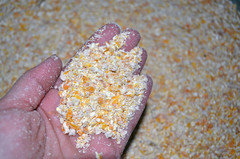 Khalid Waleed (zone 9b Isb) thanked strawchicago z5
Khalid Waleed (zone 9b Isb) thanked strawchicago z5Khalid Waleed (zone 9b Isb)
Original Author7 years agolast modified: 7 years agoStraw: Brilliant ideas that are easy to work with. We don't have copper pennies here but I can easily extract copper from electric wires. I think it can be done today.
So you think mixing vinegar in water is not a good idea due to acetic acid. That's fine.
For use during monsoon rains, I have prepared a wood ash mix that contains 6 parts wood ash, 2 parts sulphate of potash, 1 part magnesium oxide and one part potassium phosphate. I intend sprinkling amount equivalent to two tea spoons per bush in the rose beds and one teaspoon per pot when it is raining. What do you say about this. I am also going to bury steel nails and copper wire inside the pots and rose bed to address copper and iron deficiencies. I will have to check for a similar source for zinc. I already have put a 3 inch layer of leaves in my rose biomes, sprinkled with river soil plus there will be lots of rains during monsoon. Do I still need to add cracked corn? What do you say about this plan?
BTW, this is a very useful thread and I would suggest all members to go through it. Actually, quite a bit of it can be saved on personal laptops as a future reference as all this information (with so many useful links) may not be found at one place.
best regards
strawchicago z5
7 years agolast modified: 7 years agoI found the table of chemical composition for woodash versus limestone, thanks to Kimmsr in the Soil Forum. Note how Wood ash is too high in zinc at 233 mg, and only 70 mg copper, plus low in iron at 0.84% compared to high calcium at 15%.
High zinc induces copper deficiency, and high calcium & high pH induces iron deficiency. I get instant iron deficiency when I threw dolomitic lime (20% calcium, pH 9) in a rose in a pot. I get instant iron deficiency when I used bagged cow-manure has quick lime & pH over 8.
Wood ash with 2.6 potassium compared to 15 calcium? Potassium should be twice more than calcium as in rose-tissue analysis (U. of CA), and also in hydroponics studies. Wood ash with 0.5 phosphorus compared to 15 calcium? A bit more phosphorus would help with branching.
I'm glad to see sodium at 0.19%, that's quite low compared to 0.1 % in Azomite (much less calcium & potassium). The magnesium of 1 versus calcium of 15? In rose tissue analysis, its equal magnesium to phosphorus, at 1/10 fraction of potassium and 1/5 fraction of calcium. Magnesium oxide can be sprinkled on top to zap out insects .. it has a drying effect, just like wood-ash.
Woodash can also be used as insecticides ... see this excerpt from eHow: "Wood ash is a safe alternative to insecticide use in the garden. Wood ash repels insects, slugs and snails by drawing water from their bodies until they are dehydrated. Sprinkling ashes around the base of plants will control surface feeding insects."
Wood ash has high pH above 11, very caustic to my skin when I took wood ash from the neighbor's fire place. Its causticity kills insects on contact. Here's another excerpt from link below: "Abstract: Laboratory assays demonstrated that wood ash is toxic to adult and larval stages of the Colorado potato beetle. Insect mortality reached 100% among larvae and beetles continuously exposed to wood ash for periods of up to 10 days ... "
http://link.springer.com/article/10.1007%2Fs12230-012-9234-7
Here's an excerpt from the link below: http://hubcap.clemson.edu/~blpprt/bestwoodash.html
Table 1. Range in elemental composition of industrial wood ash samples and ground limestone.Wood Ash ******** Limestone Conc. in %
Calcium 15 ******** 31
Potassium 2.6 ******* 0.13
Aluminum 1.6 ******* 0.25
Magnesium 1.0 ******* 5.1
Iron 0.84 ******** 0.29
Phosphorus 0.53 ***** 0.06
Manganese 0.41 ******* 0.05
Sodium 0.19 ****** 0.07
Nitrogen 0.15 ******* 0.01Microelements Concentration in mg/kg
Wood Ash ****** Limestone
Arsenic 6
Boron 123
Cadmium 3 ***** 0.7
Chromium 57 ***** 6.0
Copper 70 ***** 10
Lead 65 ***** 55
Mercury 1.9
Molybdenum 19
Nickel 20 **** 20
Selenium 0.9
Zinc 233 **** 113Other Chemical Properties
CaCO3 Equivalent 43% (woodash) 100% for limestonepH woodash is 10.4 versus pH of limestone is 9.9
Woodash is high in calcium, potassium, zinc, chromium, and all trace elements . Woodash also contains 123 mg/kg of Boron, which is vital for plant growth. Boron is less available in alkaline clay. My soil in Chicagoland is dolomitic/limestone alkaline clay.
Woodash has 70 mg/kg of copper, a fungicide in Bordeux mixture. It has 233 mg/kg of zinc (compared to 113 in limestone) a fungicide fraction in Mancozeb spray. It has boron, another fungicide for dry rot. It has 65 mg of lead, compared to 55 mg of lead in limestone, also a fungicide. Finally woodash has 57 mg of chromium, another fungicide, here's a quote:
"In the past, chromium was also used in cooling towers as a rust and corrosion inhibitor and as a fungicide. "
http://corrosion-doctors.org/Elements-Toxic/Chromium.htm
Here is a link that might be useful: Clemson.edu on wood ash
Anna
7 years agoHere is my "Our Mother of Guadalupe" rose. I inspected the roots - it's not rootbounded so I left it in the original pot. When I got it month ago it was loaded in blooms clusters. Now The leaves have purple edges, and the rose is a slow grower. What's wrong? The mineral deficiency?
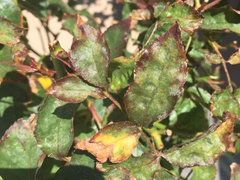
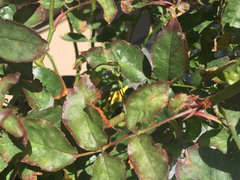
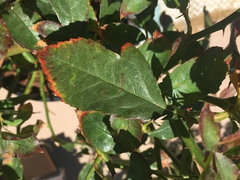
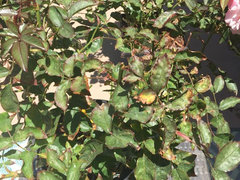
strawchicago z5
7 years agoAnna: Purple edge is a classic sign of phosphorus deficiency. I also see salt-damage (brown tip burn). I have 3 sisters in California (Mission Viejo, and 2 in Northern CA). Tap water in CA is higher in salt, plus very alkaline. Since CA has lower-rainfall, there's salt accumulation in pots.
Alkaline tap water zaps out phosphorus first, then potassium. I would stop salty-fertilizers, flush the pot well to get rid of excess salt.
Using high-iron molasses did cause brown-spots on my Gina's Rose one summer from excess iron. So I quit molasses, and just combine 2 part gypsum to 1 part sulfate of potash and that gave the best foliage & most blooms in hot & dry weather.
I use 1 teaspoon of that combo per gallon of water. When I get rain-water (at pH 5.6) that dissolve those 2 minerals well in a bottle of water. Then I give 1 teaspoon of that solution to my alkaline-tap (pH near 9).
Gypsum is known to de-salt saline-soil, and to bring down the high pH of tap-water. Bringing down the pH to rain-water (pH 5.6) will release phosphorus and potassium. Using high-pH (alkaline) tap-water locks up the phosphorus and potassium.
Gypsum has 17% sulfur, sulfate of potash has 21% sulfur .. both bring down the high pH of tap-water. What rootstock is your rose grafted on? If it's grafted on Dr. Huey ... that has a higher demand for potassium.
Khalid Waleed (zone 9b Isb) thanked strawchicago z5Anna
7 years agoStraw: what would you suggest for the best source of phosphorus? I have Lilly Miller rose food available. Also can I use soluble gypsum and sulfate of potash with every watering? I water my potted roses every 2 days in temp 80F, every day 90F
I am not sure what rootstock it is on .
aztcqn
7 years agolast modified: 7 years agoStraw thanks for the mineral charts and PH that shows availability. Very clear visual. I've noticed about 6 roses sowed the crinkly leaf syndrome after my blood,bone, potash feed. The old leaves look sad and yellowing edges, while the new growth is shooting up with giant leaves.
Oh and the rust is history. Still working on eliminating the PM. Now, to re-balance what I've done with a dose of rainwater. My next action is to cover the top of pots with home made compost for water retention. My research finds that it doesn't drop the PH much if at all, but, can buffer to keep neutral, esp. when the compost is quite old. Mines years old.
Khalid this is an excellent thread for info and experiences. Thanks for creating.The experiment continues.
Khalid Waleed (zone 9b Isb) thanked aztcqnstrawchicago z5
7 years agolast modified: 7 years agoAztcqn: A few days ago I put Standlee alfalfa pellets (no salt, no molasses) on top of my 14 pots (wimpy PALE own-root roses). I notice IMMEDIATE green-up from the pellets decaying in hot weather, releasing nutrients and sulfur. Those pellets locks the moisture below, and the pots stay wet despite 86 degree hot & dry.
Same with mint pureed .. I used a blender to puree mint & water, then pour that into soil, and that soil stays moist for a long time, while the soil without mint-pureed dries up. It's similar to putting applesauce into cake-mix to make it moist !! Mint has salicylic acid for better rooting plus UP the phosphorus & nitrogen .. plus lower high pH of alkaline tap water. So far my rootings in mint and soil are OK, no wilting in hot weather.
Anna: Here's the ingredients in Lilly Miller for roses: Chicken manure, alfalfa meal, ammonium sulfate, ammonium phosphate, sulfate of potash, calcium and sodium borate, Ferrous, Manganese and zinc oxides, sodium molybdate. NPK 5-8-4, with 4% calcium, 4% sulfur, and 0.1% iron.
Lily Miller for roses has chemical nitrogen & chicken manure thus higher in salt. In hot & dry weather neither Lily Miller nor Rose-Tone is suitable. I only use granular fertilizer in spring when there's tons of rain.
Anna: Now it's night time so I can see your pics. better. Blackstrap molasses has 15% calcium, 20% potassium, 20% iron, and very little phosphorus. Too much potassium will drive down phosphorus, plus too much iron can cause brown edges. If you gave that rose many applications of molasses in dry & hot weather, it will cause brown margins. I look at you pics. again at night, and the brown-margins look like molasses-overdose, rather phosphorus deficiency. I did that to Stephen's Big Purple rose.
Best solution is to flush that with lots of water, then give it zero-salt fertilizer like alfalfa meal on top, NPK 2-1-2, that will lock in the moisture. I prefer alfalfa pellets since it doesn't gunk up. Plus alfalfa pellets soak in tap water for 3 days, covered, will "sour" or ferment and bring down the pH to rain water level (pH 5.6). A big bag of Standlee alfalfa pellets is $18 and it lasts forever, zero salt, no smell (only smell if you make alfalfa-tea with that), but no smell if you top pots with that to buffer alkaline tap water.
I have phosphorus deficiency on my mint leaves, and it's brighter purple with zero brown edges. My mint never flower, due to phosphorus deficiency.
Khalid Waleed (zone 9b Isb) thanked strawchicago z5Khalid Waleed (zone 9b Isb)
Original Author7 years agolast modified: 7 years agoaztcqn: Thanks. I have also found it that in the long run, using homemade compost is a much better idea as compared to using organic matter that is high in one particular type of mineral. At least for me, it's hard to ensure that right balance of all minerals is maintained all the time. When I used minerals / matters like gypsum, sulphate of potash, wood ash etc directly or dissolved in tap water, it caused excess of one element that despite all my effort, I couldn't control. Excess of any one element binds certain other elements and causes a deficiency which actually is the non-availability of that particular mineral to the plant at that time and not necessarily its absence from the soil. A slow release homemade compost (including compost tea) is a much better idea.
I am now thinking of using gypsum, potash and wood ash regularly in my compost, ie, sprinkling a bit of it on every layer of kitchen waste. What do you say about this, Straw?
Straw: I am not using wood ash alone. It's a mix of 6 parts wood ash, 2 parts potash, 1 part Potassium Phosphate (KH2PO4) and 1 part Magnesium Oxide. What do you say about this? I can add 1 table spoon of this mix in the compost tea as well, to make it more effective. Would too alkaline a pH of wood ash and KH2PO4 be bad. Or can I make it neutral by also adding just a tea spoon of vinegar in 10 liters of water?
Collecting old nails, nuts / bolts and copper wire for putting in rose beds and pots to address the copper and iron deficiencies.
best regards
strawchicago z5
7 years agolast modified: 7 years agoKhalid: Very good questions. Gypsum is best saved to neutralize the alkalinity of tap-water (1 teaspoon per liter of alkaline tap).
I won't use gypsum with wood-ash, since wood-ash has plenty of calcium already. Sulfate of potash (21% sulfur) will neutralize the high pH of wood-ash.
Potassium phosphate NEEDS ACID to be dissolved in water, it crystallize and not effective at high pH. I would save potassium phosphate when you have tons of rain. Magnesium oxide is VERY ALKALINE, pH over 11, best sprinkled a tiny bit on top before tons of rain.
Rose tissue analysis shows 1/10 of phosphorus, 1/10 of magnesium, 1/2 of calcium, and 1 part of potassium to 1 part nitrogen. So phosphorus and magnesium are needed in tiny amount compared to potassium.
Conclusion: It's best to keep stuff separated, rather than mix together. Different uses for different occasions:
- gypsum to dilute in alkaline tap-water in hot & dry & zero rain.
- Magnesium oxide and potassium phosphate both need acid to be released, best used with tons of rain.
- Sulfate of potash is OK together with wood-ash, its sulfur will lower the high pH of wood-ash, to make it less alkaline & plus supply potassium to offset the high calcium of wood-ash.
Khalid Waleed (zone 9b Isb) thanked strawchicago z5Khalid Waleed (zone 9b Isb)
Original Author7 years agolast modified: 7 years agoStraw wrote:
"Conclusion: It's best to keep stuff separated, rather than mix together. Different uses for different occasions:
- gypsum to dilute in alkaline tap-water in hot & dry & zero rain.
- Magnesium oxide and potassium phosphate both need acid to be released, best used with tons of rain.
- Sulfate of potash is OK together with wood-ash, its sulfur will lower the high pH of wood-ash, to make it less alkaline & plus supply potassium to offset the high calcium of wood-ash."
That's good and clarifies many things. And if I may add to it, I do not intend using wood ash & potash mix on a normal day. It will only be used when it is raining and monsoon rains here in Islamabad are quite heavy bringing down tons of rainwater with pH 5.6. That is the time when I intend using wood ash potash mix. Last year during monsoon my roses in pots suffered fungal attacks as the soil became too acidic after heavy rains over a months time. This year, I have my rose biomes already filled with 3 inches layer of leaves. On top I have sprinkled river soil. Wood ash potash mix will be sprinkled on top of this 3 inch leaf + 1/4 inch river soil layer WHEN IT IS ALREADY RAINING. What do you say?
best regards
strawchicago z5
7 years agolast modified: 7 years agoKhalid: I agree with you on that approach. I made the mistake of sprinkle sulfate of potash before it rained .. but rain didn't come for one-more week !! Thus my roses wilted & burnt with that stuff. The neighbors did the same, they put granular fertilizer on the lawn .. rain didn't come as predicted, and their lawn got brown burnt-patches.
It's safer to have the ground soaking wet, BEFORE applying fertilizer.
I would save magnesium oxide at pH near 11 when things get too acidic (leaves get thin & wilt, fungal diseases, pests).
I would save monopotassium phosphate (very low-salt) when alkaline tap-water zaps out phosphorus, or when there's phosphorus deficiency (purple leaves, less branching of bush & one-cane wonder).
Khalid Waleed (zone 9b Isb) thanked strawchicago z5aztcqn
7 years agolast modified: 7 years agoYep. I think my adding the sulphate of potash. molasses and blood meal led to some browning leaves from the high heat we had last month, despite my watering, it seemed. New growth is lovely though.
strawchicago z5
7 years agolast modified: 7 years agoHi Aztcqn: Glad to hear from you. Molasses contain too much iron, at 20%, which pushes down Manganese. I prefer a BALANCED nutrient like whole-grain crack corn:
Crack-corn is cheap, sold at feed store for $3 for a 5 lb. bag, or $13 for a HUGE bag that lasted over a year. Good stuff to fertilizer roses in alkaline clay. Cracked corn is acidic at pH 4, birds like to eat that, plus it neutralizes my alkaline tap-water at pH 9.
http://nutritiondata.self.com/facts/cereal-grains-and-pasta/5687/2
NPK of corn meal is 1.6 / 0.65 / 0.4 .... that's better than horse manure NPK of 0.44 / 0.17 / 0.35. Whole-grain corn's minerals profile is impressive, with 53% magnesium, 25% iron, 35% phosphorus, 14% potassium, 40% manganese, plus anti-fungal agents of 37% selenium, 24% copper, and 26% zinc.
Khalid: I'm looking into herbs to supply trace elements, since chemical-fertilizer have so little trace elements (like 0.05 mg copper and 0.05 manganese and 0.06 zinc). Kelp has all trace elements, but too salty for hot & dry weather.
Basil has 6 mg of zinc and 3 mg of copper (versus only 1 mg of copper in mint). I can eat the entire cup of Thai basil, but mint is hard to eat .. too strong. For herbs highest in copper, see below:
http://nutritiondata.self.com/foods-002125000000000000000.html?maxCount=27
Zinc is the strongest anti-fungal, next is copper. Blooming require trace-elements, besides potassium and phosphorus. Lentils is also high in zinc, copper, potassium, iron. But lentils is more expensive than cracked corn.
Below link show rosemary, parsley, and sage as high in zinc:
http://www.livestrong.com/article/530281-herbs-that-contain-zinc/
Other herbs like chervil are high in zinc at 9 mg:
http://nutritiondata.self.com/foods-002124000000000000000-w.html?maxCount=21
Manganese is needed second after iron in rose-tissue analysis. Manganese is important for root-elongation & flowering. Below link shows herbs highest in manganese, with dried spearmint at 11 mg, ground cloves at 30 mg ... I got this huge container of ground clove for only $2 from Mexican store & worked great to keep deer and bunnies off my roses.
Ground ginger has 27 mg manganese, plus cinnamon, pumpkin pie spice are also high in manganese:
http://nutritiondata.self.com/foods-002126000000000000000-w.html?maxCount=47
Khalid Waleed (zone 9b Isb)
Original Author7 years agoStraw: Using herbs and spices for supply of trace elements is a brilliant idea. Actually all of us are already doing it in some manner but we need to discuss it more and perhaps record the things more deliberately to provide ready made solutions for addressing trace element deficiency "out of the items found in our kitchen". And I strongly believe that if we work out something in details, it will be a great service to rose growers / gardeners all over the world.
What I am going to do is that at the end of the debated, i will make a table and put the things in a very concise manner at one place so that they are easily approachable / usable.
best regards
strawchicago z5
7 years agolast modified: 7 years agoKhalid: I organize the above info. of herbs in my new thread "Herbs, Azomite, Crack-corn, kelp for flower and disease-resistance":
The below link talks about copper, born, manganese and zinc deficiencies in corn, excellent reference:
http://extension.agron.iastate.edu/soybean/documents/nutrientdeficiency.pdf
Anna
7 years agolast modified: 7 years agoShila's perfume is covered with bud clusters. The foliage is looking great except few top leafes on one stem. Is it iron and phosphorus deficiency or a leaf scorch from the sun?
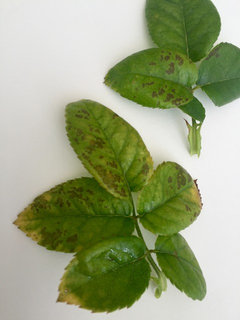
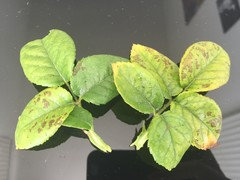
strawchicago z5
7 years agolast modified: 7 years agoAnna: Since the top leaves are affected, these are the choices:
Symptoms restricted to the newer leaves:
- Calcium - Sulphur - Iron - Zinc - Boron - Manganese - CopperIt's Manganese deficiency, but I'll explain in detail in the new thread "Answering questions on nutrient/mineral deficiency", see below:
Khalid Waleed (zone 9b Isb)
Original Author7 years agoSome of my roses have crinkled leaves, showing Cu deficiency perhaps.
This is Hafiz Zaman. To me it looks something more than copper deficiency alone.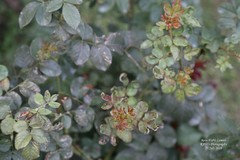 This looks more like a copper deficiency.
This looks more like a copper deficiency.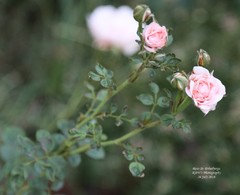
However, many other roses that had crinkled leaves earlier are now developing healthy leaves after rains. I always suspected that my soil might not be deficient of Cu and Iron (as I have been using lot of wood ash) but due to high pH levels (due to wood ash and tap water), they are locked and no more available to the roses despite being there in the soil. Healthy fresh leaves after rains confirms this....
Have a look at fresh leaves.
Old leaves that were pale yellowish green earlier with darker veins are now a bit darker, not that pale. Fresh leaves seem to be ok. Both the pots in center are Crimson Glory Cl. I have allowed them to grow as they want to and have not trimmed them. Will do that if needed. There is lot of fresh growth which is darker and healthier. Iron deficiency is no more visible, except in few old leaves.
Both the pots in center are Crimson Glory Cl. I have allowed them to grow as they want to and have not trimmed them. Will do that if needed. There is lot of fresh growth which is darker and healthier. Iron deficiency is no more visible, except in few old leaves.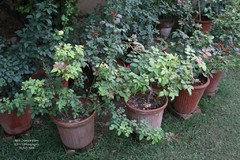

Some of the roses, like this Liv Tyler bush, have burnt fresh leaves. I wonder it is due to sudden change in temps nowadays. At night it rains and it is cool and during day, sun is strong with temps reaching up to 105*F. Many other bushes also have similar looking burnt young leaves.
So.... rains have come to be a blessing for me it seems.
Your views Straw!!
best regards
strawchicago z5
7 years agolast modified: 7 years agoKhalid: Now it's night time so I can see better to revise my answer, look through your pics. 4 times: First pic. of H. Zaman, I agree that it's MORE THAN copper deficiency, it's too much wood-ash.
I did that when I tested wood-ash but dumb enough to give to Sharifa Asma (has Rugosa heritage). Rugosa hates salty fertilizer, and leaves turn brown & fried.
The second pic. of St. Ethel. looks like extreme alkalinity-burn to me. It's definitely NOT acid burn .. acid burn is different with leaves curled-up & thin-out & withering.
Crimson Glory's leaves look healthy. You are right that acidic rain water releases the copper-tied up in alkaline soil for that rose. My Crimson as own-root loved acidic rain.
The last pic. of Liv Tyler with wilted top leaves: I grew Live Tyler for 2 years and it HATED acid, one time I lowered my tap water with vinegar and YOUNG leaves got wilted & burnt in hot summer sun.
Liv Tyler rose didn't like gypsum either (too acidic with 17 % sulfur).
Liv Tyler with dark-green leaves: sensitive to acid or sulfur as in rain or gypsum. But pale leaves like Old-Garden-roses (Comte de Chambord) and Duchess de Rohan can take tons of rain, zero problems.
With dark-green leaves: dolomitic lime (lowest salt index 0.6) is best to provide calcium & magnesium to cope with heat. I put that on Big Purple rose (dark-green leaves) every year after heavy rain, it's has the rain-barrel overflow dumping tons of rain.
Dark-green leaves Big Purple HATE Azomite with 0.1 % salt ... leaves got burnt to brown from that in hot sun.
Calcium de-salt the soil when rain-water breaks it down. Calcium is known to help with heat-tolerance. Magnesium is like a glue to retain nutrients better, best in 1/10 of potassium, and 1/5 of calcium in rose-tissue analysis.
Also UP the pH in French Romantica like Liv Tyler helps leaves to be thicker & less wilt in hot sun. French Meilland roses prefer it alkaline. I always give lime to Meilland roses, after bad experiences wilting them with gypsum (17% sulfur). Acidic rain at pH 5.6 also provide sulfur.
I will post a pic. of Veteran's Honor leaves became very thin, flipped over after tons of acidic rain. Did extensive research one summer as to what nutrients got leached out during rain: 1) nitrogen 2) potassium 3) calcium 4) magnesium in that order. Soil bacteria can fix nitrogen, but potassium & calcium & magnesium need to be supplied.
My clay is exceedingly high in magnesium, but that sticky & heavy clay under a rainspout became fluffy & loamy & crumbly .. and I have to put dolomitic lime, with magnesium as the "glue" to hold soil together under the rain-spout. Without magnesium, soil can't hold on to nutrients. Too much magnesium, result in gluey & sticky clay.
http://ny.water.usgs.gov/pubs/wri/wri984267/WRIR98-4267.pdf
"The discovery of acid rain in the 1970’s prompted concern that deposition of acids could increase leaching of calcium, and other neutralizing cations, such as magnesium, sodium, and potassium (referred to as base cations) from forest soils. Acid deposition provides (1) hydrogen ions, which displace cations adsorbed to soil surfaces, and (2) sulfate and nitrate ions, which tend to keep these cations dissolved in soil water that eventually drains into streams and lakes. Results of preliminary research in the 1970’s suggested that elevated leaching might deplete soil calcium."
http://www.sciencedirect.com/science/article/pii/S004896979800240X
" The previous investigation of the chemical characteristics of precipitation within the Wielkopolski National Park has shown its high acidity which sometimes drops below pH 3.0. This paper deals with calcium and magnesium ion leaching by acid rain from typical soils of the area. The sprinkling lasted 30 days, simulating a rainfall of 400 mm. The eluates were analysed every day. The soil properties and forms of calcium and magnesium were determined before and after treatment. The investigations show that quite large amounts of Ca2+ and Mg2+ can be leached from soil — in the very acid treatment (pH 2.0) leaching amounted to about 100 mg Ca2+ and 17 mg Mg2+ per kg of soil."
Khalid Waleed (zone 9b Isb) thanked strawchicago z5msdorkgirl
7 years agoJust stopping in quickly ... nice info and details everyone! Thank you straw for providing me with a lot of reading material for my recent trip ... now to find out how I will save all these pages so I don't use up precious data.
Khalid Waleed (zone 9b Isb)
Original Author7 years agoStraw wrote: "Now it's night time so I can see better to revise my answer, look through your pics. 4 times: First pic. of H. Zaman, I agree that it's MORE THAN copper deficiency, it's too much wood-ash."
Straw: If I correctly recall, in past 5-6 months, I sprinkled wood ash Hafiz Zaman rose bed only 3 times (2-3 table spoons each time), that too when it was raining. The bush is planted in the ground so I am not sure if there could be an accumulation of wood ash. During this period, it must have rained around 30 times (or may be more) which more than enough to neutralize this much quantity of wood ash I guess.
More importantly, the leaves of Hafiz Zaman were perfect when it wasn't raining that much and I wasn't using wood ash very often. Now, it rains almost every day and I have sprinkled wood ash only twice yet the leave turn out like this. Could you think of any other reason?
best regards
strawchicago z5
7 years agolast modified: 7 years agoKhalid: I have ten own-root roses in pots now, compared to others in my alkaline clay. The pots have slightly acidic potting soil & very well-drained, so fertilizer didn't hurt them, be it salty-Azomite, or acidic sulfate of potash.
But my roses in hard-clay are VERY SENSITIVE to fertilizer, since it's slower draining clay. Plus my clay has higher pH at 8, so the alkaline & salty fertilizer like Azomite-rock-dust really hurt roots.
I had a pile of wood-ash (neighbor gave it last Nov) .. so it sat there through the winter & 6 months of snow & rain to de-salt it. I saw weeds sprouting from the wood-ash, so I know it's safe. I mixed that wood-ash into the soil (right below rain-spout) and planted Sharifa Asma.
Tons of rain from that rain-spout which released the heavy-metals from wood-ash quickly, and Sharifa got the worst brown burns ever !! I had to take Sharifa OUT & rinsed its roots, and put in a pot.
Later I came back to that rain-spout spot, spent 1 hour digging to throw away 4-wheel-barrows filled with rocks & clay, plus taking the wood-ash-tainted soil out. I put fresh soil & Comte (grafted on multiflora) in that spot, and it's sprouting clean-leaves now.
If your soil in-ground has an underlying clay at the bottom, it will retain fertilizer on top very well. Pots leach out minerals with frequent watering, but NOT so with in-ground if there's a clay layer underneath. I fertilize my pots frequently since nutrients get leached out .. but for roses in ground, I fertilize most of them only ONCE a year in spring.
Khalid Waleed (zone 9b Isb) thanked strawchicago z5Khalid Waleed (zone 9b Isb)
Original Author7 years agoStraw: All my rose beds have fluffy river soil which has good drainage, mixed with lot of organic matter. When it rains, the water disappears within minutes and next day, top few inches are dry.
All the rose biomes are 2.5 feet deep, filled with river soil and organic matter. Water doesn't stay in them for more than few minutes. When I dig, the soil is very soft and fluffy, just like compost. The soil pH is slightly acidic in general. I have been adding lots and lots of leaves in each biome and bed since last year and most of them have decomposed in situ. That is why I feel that there might be some other reason for all this.
 St Etheburga is blooming very well but leaves are crinkled and large size black areas (not black spot). But these are old leaves. New leaves have not developed yet because all branches are full of buds. Few other bushes that earlier had crinkled leaves are now developing fresh leaves which are perfectly ok. I am hoping that fresh leaves on St. Ethelburga will also be ok but I would like to know the reason that why this happened.
St Etheburga is blooming very well but leaves are crinkled and large size black areas (not black spot). But these are old leaves. New leaves have not developed yet because all branches are full of buds. Few other bushes that earlier had crinkled leaves are now developing fresh leaves which are perfectly ok. I am hoping that fresh leaves on St. Ethelburga will also be ok but I would like to know the reason that why this happened.
If continuous watering with tap water in the hot months (May and June) and a couple of times application of wood ash (only when it rained) has been the reason for high pH that locked Cu than I would know it in few days when the bush develops fresh leaves. What do you say?
The Gold Medal bush also seems to have similar problem. I have been giving more wood ash to Gold Medal as compared to other roses when I learnt that it likes it alkaline. Last year, this bush had similar looking leaves most of the year but when I gave it wood ash many times during winter and spring, leaves in spring were perfect. But now, I again see the same crinkled leaves on my Gold Medal. If the leaves improved after application of wood ash in spring and late winters, why they are bad again? Not sure....
best regards
strawchicago z5
7 years agolast modified: 7 years agoKhalid: In MG bloom-booster formula (NPK 15-30-15), copper is given as 0.07 versus slightly less zinc at 0.06. Too much zinc will make copper less available, those 2 trace elements compete for the same absorption sites.
Note how Wood ash is too high in zinc at 233 mg/kg, and only 70 mg copper, plus low in iron at 0.84% compared to high calcium at 15%. Also low in phosphorus at 0.53 %.
High zinc induces copper deficiency, and high calcium & high pH induces iron deficiency. I get instant iron deficiency when I threw dolomitic lime (20% calcium, pH 9) in a rose in a pot. Thus less is best.
Copper Deficiency Caused by: - High pH & high in organic matter.
- Waterlogged soil & Increased Zinc, Nitrogen and Phosphorus levels.- Young shoots are distorted or wilting (copper deficiency symptom).
Wood-ash is high in boron at 123 mg .. red-lava rock is also high in boron & iron. I threw a bunch of red-lava-rock on W.S. 2000 .. no problems in dry weather. But with tons of acidic rain, that broke down and STAINED the leaves . youngest leaves got brown edges from iron stain.
How to solve the high zinc in wood-ash that made copper less available? ORGANIC MATTER IS THE SOLUTION. Some excerpt from below link:
Copper ions forms strong coordination complexes with organic matter (Stevenson, 1976; Stevenson, 1991). Hence, Cu is often predominantly found bound to the organic matter fraction in the soil and soil organic matter can be the most important soil factor in determining Cu bioavailability.
In a range of Cu contaminated soils greater than 98% of the Cu in the soil solution was bound to organic complexes, irrespective of pH (Sauve et al., 1997). Cu applied as sewage sludge was retained in the soil solution in greater quantities than Cu applied as a sulphate because it was bound to dissolved organics from the sludge.
http://plantstress.com/Articles/toxicity_i/Metal_toxicity.pdf
The above link describes what happen to plants with OVERDOSE of trace elements: "Copper toxicity often causes foliar interveinal chlorosis, the leaf becoming necrotic with increasing exposure. In Manganese toxicity, symptoms include chlorosis of older leaves, necrotic spotting and a symptom on young foliage known as .crinkle leaf.. Zinc toxicity symptoms include chlorosis and reddening of younger leaves with necrotic lesions on leaves in severe cases. "
" Many studies have found that plant uptake of Manganese and Zinc increases as soil pH decreases. Some soil studies have found little relationship between soil pH and Cu concentration in the soil solution ... The reason for this is the strong affinity of Cu for organic matter (Norvell, 1991).
Manganese tends to form weak coordination complexes with organic matter (Olomu et al., 1973; McBride, 1982). This means that Mn2+ is unable to compete effectively with Cu2.
The activity of the highly bioavailable Zn2+ in the soil solution decreased as organic matter increased across a range of contaminated soils.
http://plantstress.com/Articles/toxicity_i/Metal_toxicity.pdf
Vaporvac Z6-OhioRiverValley
7 years agoI just got back from vacation and found this. A friend watered while I was away. The rose is all new growth on Munstead Wood, grafted on DH, the other is a balloon flower. I had rocks next to it to mark its location, so it may be leaching lime? I have another one I'll post later today. Thanks for any input or thoughts on what's causing such colouration.
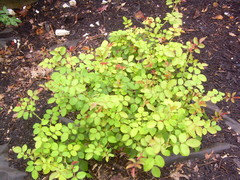

strawchicago z5
7 years agolast modified: 7 years ago
Vaporvac: The first one is sulfur-deficiency (entire plant is pale). Solution: use 2 teaspoon gypsum (17% sulfur) with 1 teaspoon sulfate of potash (21% sulfur) per 1 gallon of water.The above also induce tons of blooms, see above pic. of my Liv Tyler at end of August .. that's the day that my kid's school closed since the temp. was over 94, you can see Japanese Beetles on some on the blooms.
Sulfur deficiency often results from using alkaline tap-water (pH above 8). It will go away when you get rain (pH 5.6).
Decayed organic matter also give off sulfur, so does acidic rain-water. Making fermented alfalfa tea (soaked for 4 days) until it's sour, also provide sulfur .. but this drastic watering of sour-solution will induce blackspots on roses that like it alkaline or grafted on Dr. Huey.
Since your Munstead Wood is very healthy, the gypsum and sulfate of potash combo is a safer choice. Another safe choice is to top with a slow-decayed filter that releases sulfur GRADUALLY, such as alfalfa pellets (pH 5.8) or crack corn (pH 4) mixed with alkaline soil to neutralize the acidity.
I have blue balloon flower in my alkaline clay (pH 8) but I never see such marginal chlorosis before. The leaves look like magnesium deficiency induced by too much unstable calcium-hydroxide in tap-water. But magnesium def. can be confused with zinc def.
If your soil is clayish, then it's zinc. def (result from too much calcium, as in tap-water, or limestone-rocks nearby).
Magnesium def. happens more on lowest leaves and in loamy or sandy soil.
Khalid Waleed (zone 9b)
7 years agoThere is so much in this thread but I am not getting enough time nowadays to read and comprehend it properly. Re-read some of the long post today and I think many of my questions have been answered and many new questions have been raised. Thanks for consistent guidance Straw.
best regards
Vaporvac Z6-OhioRiverValley
7 years agoThank you SO MUCH for your detailed response. I've put more compost and leaf mold around these plants and we've had A LOT of rain, so I'm hoping for an improvement. Two people were watering my garden (unbeknownst to me), and I think that accounts for some of this. I also moved the limestone rocks away. I'm going to buy some cracked corn as I think it will help my alkaline clay substrate.
I was pleased to see MW's growth as I transplanted it July 12 in super hot weather and it was only new this year. It lost many leaves, but has now bounced back with great growth and buds/blooms. I was just worried over that pale colour.
I have another pic of one of my Viking Queens I'll post tonight. It's coloration is also new since I was out of town.
Vaporvac Z6-OhioRiverValley
7 years agoHere are the pics. I hope someone can recognize the symptoms. MW and the Balloon Flower seem to be outgrowing their issues with compost and rain.


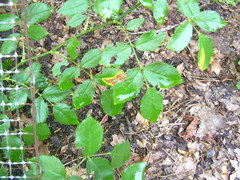
strawchicago z5
7 years agolast modified: 7 years agoVaporvac: Potassium deficiency can mimic RMV (Rose mosaic virus). I had the exact same leaves with yellowish outer on my Gruss an Teplitz .. that when I put tons of gypsum (calcium sulfate) in the planting hole. Too much calcium drove down potassium.
It looked like RMV, but it was not RMV, since Gruss had perfect leaves in potting soil, and developed that yellowish-outer-margin only in high-calcium clay.
After many applications of sulfate of potash NPK 0-0-50, Gruss has normal leaves in its 2nd, 3rd, and 4th years. Same with Pink Peace (grafted on Dr. Huey), it's a BS-fest, so I dug up to put 4 cups of lime in the planting hole. Then it rained, so I put more lime on top. Too much calcium drove down potassium, and a few Pink Peace's oldest leaves look like your pic.
Potassium deficiency starts out as very thin, slender canes & zero blooms, then progress to oldest leaves with outer margins turning yellowish, then brown spots later. Five pounds of sulfate of potash for $16 is worth buying from Amazon. For my 50+ roses, I use 2 pounds per year to induce tons of blooms.
It's best to order from Amazon, since the Espoma Potash sold at local stores is the high-salt potassium chloride, with salt-index 120, that's the stuff we use to melt ice in my cold zone 5a. What you want is sulfate of potash, at salt index 43, much less, also has 21% sulfur to green up leaves.
Vaporvac Z6-OhioRiverValley
7 years agoThank you again. Wow! Had not considered RMV as my other Viking Queen has good looking leaves, (although a few older ones are brown and dry at the tips). This particular 1st year plant has bloomed less than the other that's in a sunnier location. This one gets morning sun only being on an eastern wall, but seems to be growing OK. It was also the smallest of the two plants.
I will buy some of the potash and see if it makes a difference. Will it take a while? How much should I apply? Does this mean my soil is lacking and I should amend the bed? I ask because I'm planting a Darcey Bussell, Falstaff and Sugar Moon in that bed shortly and am currently amending with compost.
Khalid Waleed (zone 9b)
7 years agoWow... what a wonderful thread. Would go through all the post on the weekend again.
strawchicago z5
3 years agoNote that too much phosphorus will cause zinc and iron deficiencies. Too much calcium also cause zinc deficiency (small & pale leaves and short stems).
strawchicago z5
2 years agoOver-fertilization: wilting, leaves curl down, plus brown burns at tip. Decade ago when my toddler sprinkled too much NPK 10-10-10 granules on my tomatoes, we got fat tomato worms for the first time ever (excess nitrogen & phosphorus attract pests). We had 1/10 the amount of fruits, plus leaves look like below:

Too acidic: TOP LEAVES CURL UP. Tiny & pale and thinner leaves, bronzy leaves. Fungus: blackspots & rust & mildew. See below my Mustead Wood when I put too much acidic pine bark and acidic gypsum:
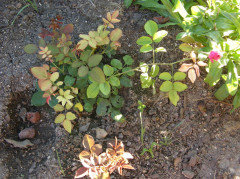
Too alkaline: Pale upper branches. Note iron deficiency in upper leaves, plus zinc deficiency in older leaves (blotchy yellow) of below pic.
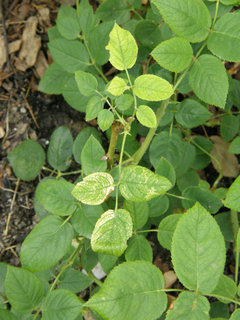
Too alkaline with upper leaves twisted like witches broom (boron def).
Too alkaline, iron def: pale UPPER leaves with green veins.
See below with both iron (pale leaves) and copper deficiency (brown & dry spots)

Too alkaline, zinc def: Short plants with a reduction in internodes length and leaf size. Leaf edges may be distorted or puckered and yellowing between the leaf veins, see below:

Too alkaline, copper def: crinkled leaves, young leaves are dark green but twisted or misshapen, often with brown, dry spots. See below:

U. of Colorado best describes zinc deficiency:
"Plants tend to be stunted due to a shortening of the internodes. Leaves show a general yellowing of the upper foliage with a browning or bronzing of the older or lower leaves. The leaves of zinc-deficient typically have a crinkled appearance. A general downward curl of the leaves also will occur and flowering will be poor."
Potassium def: Less blooms, balling, thin & weak stems, and blackspots, plus lowest leaves have yellow edges, then progressing to brown edge. Below is potassium deficiency in Teasing Georgia since I put too much lime in the pot. Too much calcium induces potassium deficiency. I reversed it with high-potassium fertilizer, note below new growth is normal:
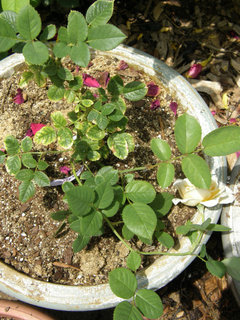
Calcium def: less petals, stunt growth & tip die-back & wilting top shoot, see below wilted shoot on Abraham Darby in 92 F, the growth is too fast, but there's not enough calcium. SOLUBLE calcium is known to help plants to cope with heat. Note below: young leaves are distorted, with curled margins and tip or with brown spots. Calcium def. is caused by low pH, below happened after a day of heavy acidic rain, then high temp:

Nitrogen def: small leaves & pale LOWEST leaves, see below progression of nitrogen def:
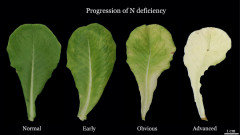
Sulfur def: below entire plant is pale & stunt growth. gypsum has 21% sulfur for growth:

Too alkaline will result in newest leaves being pale (iron deficiency with green veins, but pale background). Older leaves become blotchy pale (zinc def.).
To correct too alkaline, sulfur at 30% or gypsum (calcium sulfate with 21% sulfur) gives fastest deep-green leaves. Also high nitrogen fertilizer like MG-soluble for plants NPK 24-8-16 will make leaves dark-green instantly (but higher in salt with potassium chloride or muriate of potash). MG-soluble for roses 18-24-16 also work in deep-green leaves since it's more acidic, plus less salt with sulfate of potash.
strawchicago z5
2 years agolast modified: 2 years agoBoron deficiency is common in alkaline condition with blind shoots (no blooms) and rosette bunching up of leaves (often mistaken for midge damage). Anna in Beverly Hills, CA also posted pics. of blind-shoot & rosette whorls like below (back in 2016 in Organic Rose). She grew roses in pots. Blind-shoot & rosette whorls are called witches' broom, typical of Boron deficiency in high pH with no acidic rain.
Young leaves become irregularly shaped, thicker (especially around their tip) and dark green. - Extensive stem necrosis. - Terminal bud necrosis (blind shoots). Decreased flower and seed production. - Short internodes. - Witches' broom. Below is boron deficiency:
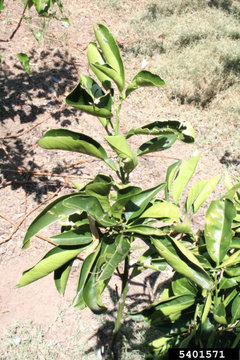
Below are pics. posted by BirdsforRoses in CA with high pH soil over 9, and alkaline tap water at pH 9. It's boron deficiency with bunching up of leaves, like a broom at the end, often mistaken for midge damage. Birdsforroses wrote: " Imagine my disappointment when all the new growth that came out were these rosette whorls! For the blind growth, I usually cut the tip off at a leaf node. But for these tight whorls, there is not enough stem to cut."


Soluble Master Blend at NPK 4-18-38 (sold at Walmart & Amazon) corrects high pH problem. It's acidic, plus it has way more trace elements (10 times more boron at 0.2%, 4 times more iron at 0.4, many times more manganese at 0.2 (instead of 0.05 like others), and decent zinc at 0.05%, also copper at 0.05%.
strawchicago z5
2 years agoNitrogen deficiency occurs either in high rain, OR too much watering in small pots. I got nitrogen deficiency like Middlepath's Madame Alfred C. during 2015's drought with high temp over 90 F on all my 8 pots from Roses Unlimited. Nitrogen leaches out the most from in this order: small pots, sandy soil, loamy soil, wet clay, and least leaching is dry clay.
See excerpt from below link: "Nitrogen in particular is mobile and volatile in water logged soils. Do not fertilize saturated soils. After more than 6 inches of rainfall over a day or two, you may have lost most of your plant available nitrate-N fertilizer. Remember that it is the nitrate form that moves with the water, and it takes soil microbes a couple of weeks to convert ammonia or urea N to the nitrate form. "
https://www.farmprogress.com/management/heavy-rain-causing-nitrogen-leaching-florida
Back in 2015 stores were out of MG-moisture-control potting soil, so I used cheap Schultz potting soil (zero nutrients sawdust and bark). Plus I used LOW-nitrogen ORGANIC fertilizer (soluble) with zero granular fertilizer on my pots. Plus I watered my pots twice a day since it was so hot & dry. Got nitrogen deficiency just like Middlepath's MAC.
"Nitrogen Deficiency Caused by:
- High levels of Phosphorus or Potassium & Waterlogged soil.- Yellowing of the leaves, that starts from its tip. Older leaves are affected first
- Thin young shoots & Stunted growth & Small sized leaves & - Short internodes."http://www.plantsdb.gr/en/general-cultivation/fertilizing/457-nutrient-deficiencies-and-toxicity
Nitrogen deficiency is caused by too much rain, or by FREQUENT WATERING in hot & dry weather in small pots. Nitrogen mobility is a 10, it moves with water (be it rain water or tap water). See pic. below of progression of nitrogen def. in lettuce:

Note the yellowing that starts at the tip on lower leaves: nitrogen deficiency.
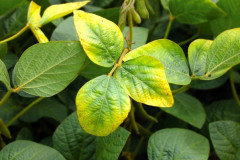
Below Older, yellow leaves on the fatsia show signs of nitrogen deficiency. Photo by Heather Kirk-Ballard/LSU AgCenter
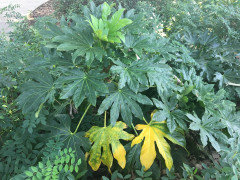
https://www.lsuagcenter.com/profiles/rbogren/articles/page1568388982983
Excerpt from above link: "When nitrogen is low, plant growth is slow, and the new leaves are small. This is because nitrogen promotes green, leafy growth. You can remedy this with the addition of high-nitrogen fertilizer such as ammonium sulfate or calcium nitrate for container plants."

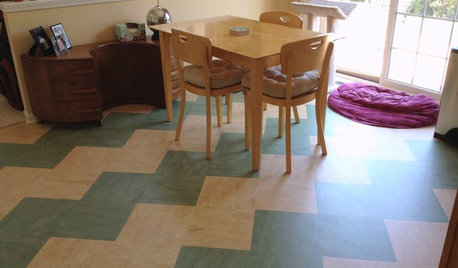





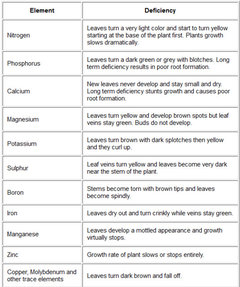



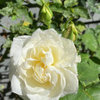
strawchicago z5